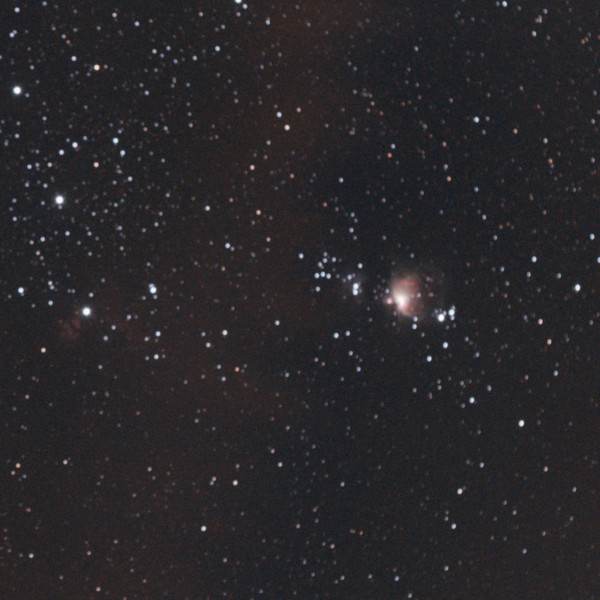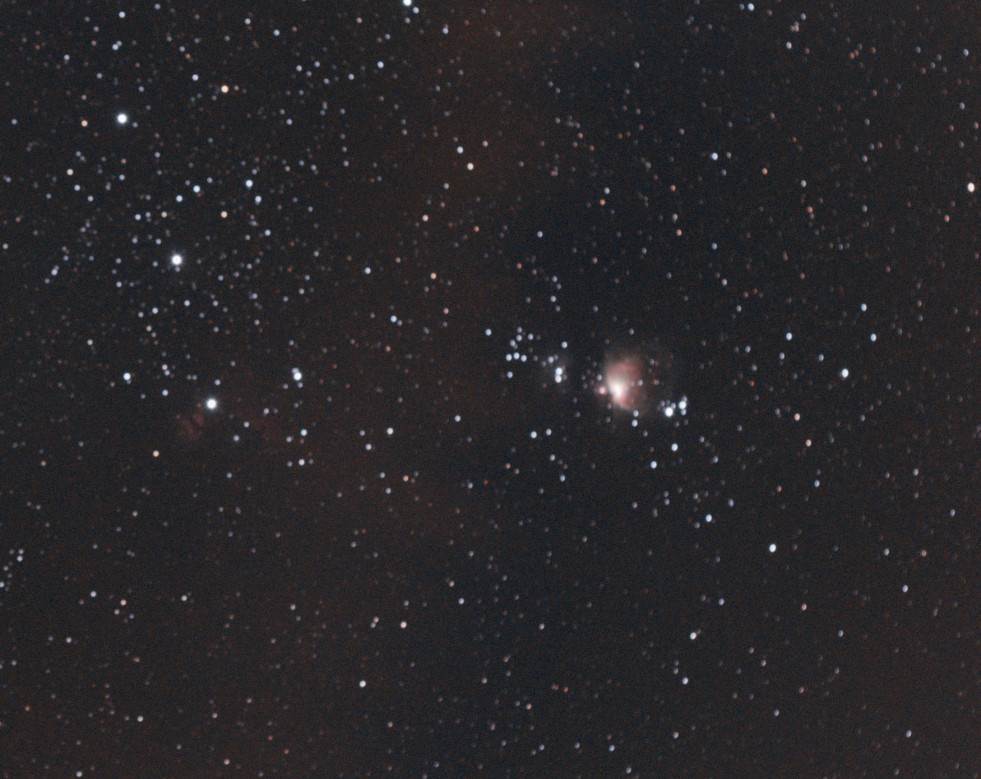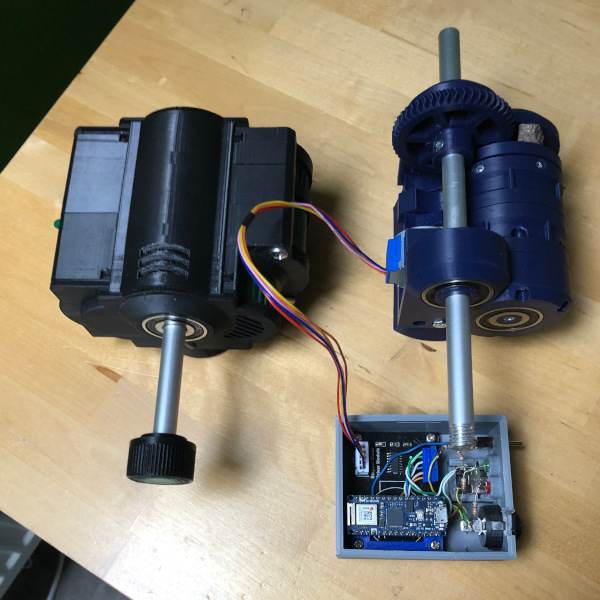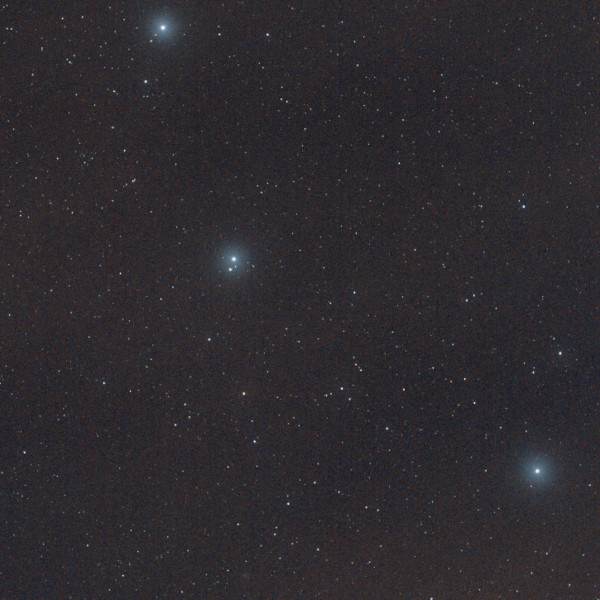
Up to this point, I mentioned that I’d had a lot of fun getting my kids outside with me when imaging. Recently, however, I had a chance to get my dad outside with me. We took a quick trip back to my home state of Pennsylvania to visit with our family. And we also snuck down to Florida for a couple of days of t-shirt and shorts weather at Universal Studios. I have to admit that I’m rather exhausted from all the travel, but it was a really nice break. While I didn’t pack up all my kit for traveling, I did take the camera with my 50mm lens just in case I had a chance to do some untracked astrophotography. The photos were less than impressive, but it was awesome to get some father and son time to share this hobby with my dad.
Clearer, Darker, Colder, and Yes, Cloudy
There was a whole lot less humidity in the air in Pennsylvania which made the skies a lot clearer than what I’m used to in Poland. I suspect this was in part due to the fact that it was also a lot colder. The area I was staying in is a Bortle 5 area which meant conditions were also a little darker. But alas, I couldn’t manage to completely escape the clouds. I won’t complain though because this is the first time in months that I was even able to see stars.
It had been a while since I attempted to shoot without tracking. It’s a simpler process but I was reminded that the devil is in the details and it’s important to take your time and plan out your imaging session. The big mistake that I made? I neglected to let the camera soak outside for a while before beginning my imaging. My focus ended up shifting rather dramatically and so we ended up with a horribly blurry stacked photo. Hey, at least I got to shoot Orion for a little while and besides, my dad thought this was the coolest thing ever and he had a blast.

Back Home For a Little Testing
I mentioned in my last post that I’ve been keeping busy working on the next-generation version of my 3d-printed star tracker. Last night, I finally had a couple-hour window to do some testing. My big goal with the next-generation tracker is to cut down the complexity and the number of printed parts. Below you’ll see a picture of Gamma and the next-gen tracker side-by-side. This really is just a test rig at this point but I can share with you at this point that the next-gen tracker has about 1/3 the number of printed parts. Much simpler… And I’m sure in the final version it will be even better. Oh, and did you notice the old electronics box that I’m still using from Alpha? 🙂

Next-Gen First Test
While it wasn’t the greatest night for shooting, it was fine for testing. I got everything set up with the next-gen tracker and polar aligned. After turning on the tracker, I noticed I was getting horrible star trails. But I smiled as I knew exactly what was happening – the tracker was simply rotating the wrong way. Very easy and quick code fix. And then this thing started tracking nails. I was really surprised, to be honest. And I know that this being a test rig, is not as stable as it will be once I finish the design. Here is a look at the first stacked photo pointed at the Big Dipper since there weren’t any clouds in the East…

I was really surprised by how smoothly the images were coming out. It was clear that my polar alignment could have been a little better, but the drift was very uniform. With the 50mm, there didn’t appear to be any jitter in the photos. Again, this is encouraging because I didn’t grease the gears or anything yet. There is also a big sigh of relief because I was really worried about how well the compound planetary gearbox was going to work. It worked just fine. Proof-of-concept validated.
Next on Tap
I’m going to digest the very encouraging results from the first test of the next-gen star tracker. I already have a list of things that I’ll need to fix/improve in the final version. But for the most part, I’ll just stay the course with this design. I’m also going to spend a lot more time thinking about how I want to house the electronics in this version. I want everything to be as small and compact as possible. I’ll need to order some new parts for that.
Now that the next-gen is on its way, I’m going to take a break and return to finishing the focuser. A number of you have been commenting and sending emails about this so I think this is the perfect time to finish that off – at least the first version anyhow. So stay tuned.
